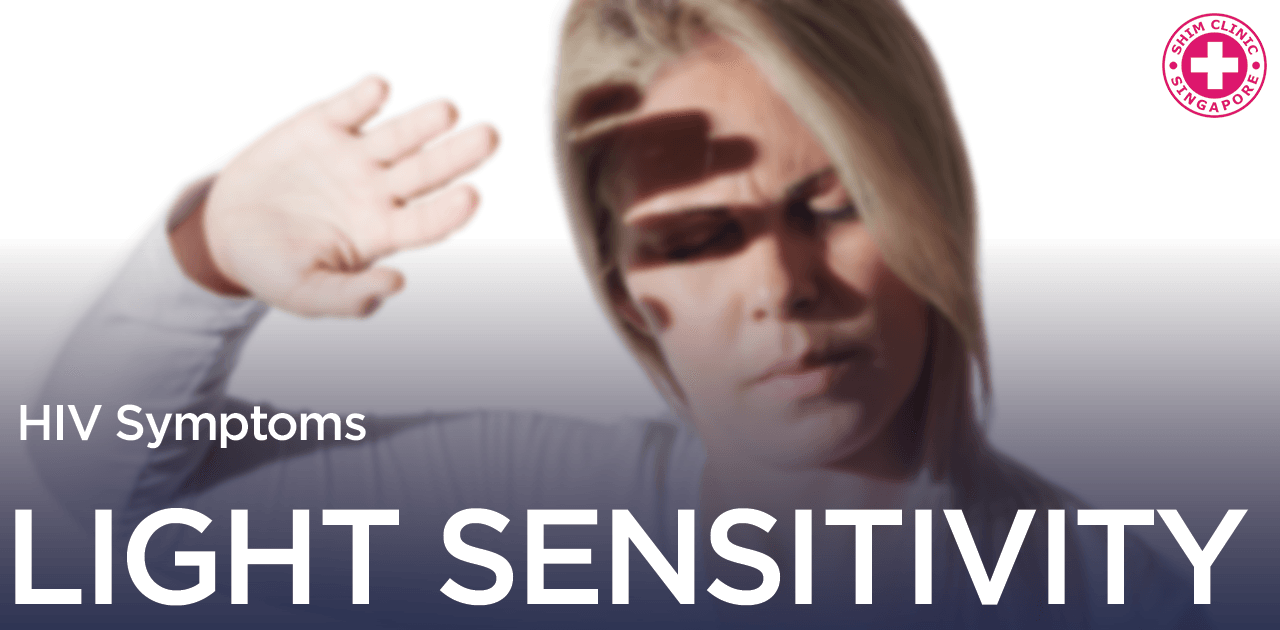HIV Light Sensitivity Singapore | Shim Clinic
| Help me about HIV Light Sensitivity ! |

| Permalink: https://shimclinic.sg/hiv-light-sensitivity |
Photophobia, or an increased sensitivity to light, is a common feature of certain types of headaches, including migraines, hangovers, and viral-induced headaches. It can occur during the flu-like illness that some people experience early in the course of HIV infection.
Photophobia may be a word that you’re not familiar with, but chances are good that you’ve experienced it at some point. Photophobia is the medical term for increased light sensitivity. When experiencing photophobia, normal lights may seem too bright. You may want to hide your eyes, staying in a dark room. Photophobia often goes along with the related symptom of phonophobia, in which sounds seem too loud and you just want everything to be quiet. The world seems too bright and loud, and these things cause you pain.
Photophobia is a common feature of certain types of headaches, such as migraines. Many people also experience it during an alcohol hangover. Having light sensitivity can also occur during an illness. For instance, when you have influenza (“the flu”), you may experience it. Certain eye conditions can also cause photophobia. Some people always have an increased light sensitivity relative to those around them. It’s only a symptom of concern if the light sensitivity is new, and is different from your normal baseline.
- Photophobia is an increased sensitivity to light. It sometimes goes along with photophobia, an increased sensitivity to sounds.
- Photophobia can occur during many types of headaches, including migraines, hangovers, and viral-induced illnesses.
- The flu-like illness that often occurs early in the course of HIV infection may have photophobia as a symptom.
- Other possible symptoms include fever, rash, and nausea, but there’s a wide variation in how people experience this illness. Many have no symptoms at all.
- To find out whether or not you have HIV, you need an HIV test. HIV cannot be diagnosed based on symptoms alone.
Early in the course of an HIV infection, many people experience a flu-like illness that begins 2 to 4 weeks after exposure to the virus. Photophobia is a common symptom that can occur during the course of this illness. Other symptoms, like headache, fever, and rash, are also common. The symptoms of this illness can vary between individuals, so not everyone experiences it in the same way. Some people have no symptoms at all, while others feel like they have a very bad flu for a few weeks.
Because of the individual variation and the similarity of the symptoms of the illness to other common infections, it’s not possible to diagnose HIV based on having common HIV symptoms. Instead, you need an HIV test to find out whether or not you have the infection. When you visit your doctor to talk about your potential HIV symptoms, it’s very important to disclose any possible exposures that you may have had. This includes sexual activity with new partners and sharing equipment for injecting drugs.
Although some people feel embarrassed to talk about such private matters with their doctors, your doctor needs to know if and when you may have been exposed to HIV in order to do the right type of HIV test, accurately diagnose you, and provide the right treatment. Attempting to hide anything about your past has the potential to harm you, because if you don’t find out early that you have HIV, you’ll miss your opportunity to get early treatment, before the virus causes severe symptoms.
Sources:
Mayo Clinic. “STD symptoms: Common STDs and their symptoms.” Mayo Clinic. Published 18 Mar 2015. Accessed 20 Jul 2016. http://www.mayoclinic.org/std-symptoms/art-20047081
Centers for Disease Control and Prevention. “Screening Recommendations Referenced in Treatment Guidelines and Original Recommendation Sources.” Centers for Disease Control and Prevention. Published 04 Jun 2015. Accessed 20 Jul 2016. http://www.cdc.gov/std/tg2015/screening-recommendations.htm
Centers for Disease Control and Prevention. “HIV/AIDS.” Centers for Disease Control and Prevention. Published 05 Jul 2016. Accessed 27 Jul 2016. http://www.cdc.gov/hiv/
Centers for Disease Control and Prevention. “HIV Basics – Testing.” Centers for Disease Control and Prevention. Published 12 Jul 2016. Accessed 20 Jul 2016. http://www.cdc.gov/hiv/basics/testing.html
U.S. Department of Health & Human Services. “Post-Exposure Prophylaxis (PEP).” AIDS.gov. Published 21 Sep 2015. Accessed 20 Jul 2016. https://www.aids.gov/hiv-aids-basics/prevention/reduce-your-risk/post-exposure-prophylaxis/
| Timeline | HIV | STD | Pregnancy |
|---|---|---|---|
| Before exposure | |||
| Contraception (females only) | |||
| HIV PrEP (pre-exposure prophylaxis) - Stop HIV infection before exposure | STD vaccine: - Hepatitis vaccine - HPV vaccine | ||
| STD / HIV exposure | |||
| 0-72 hours | HIV PEP (post-exposure prophylaxis) - Stop HIV infection after exposure | STD testing * - Screening test - to look for asymptomatic infections - from previous exposures | Emergency contraception with the morning-after pill (females only) |
| 2 weeks | HIV DNA Test | ||
| 1 month | HIV 4th Generation Test - SD Bioline HIV Ag/Ab Combo - Fingerprick blood sampling. - 20 minutes to results | ||
| 3 months | HIV 3rd Generation Test - OraQuick® HIV-1/2 Antibody - Oral fluid or - Fingerprick blood sampling. - 20 minutes to results | STD testing * - Full & comprehensive - diagnostic test - to look for current infections | |
| Watch for | HIV Symptoms | STD Symptoms | |
| If infected | HIV Treatment | STD Treatment | Abortion |
References
